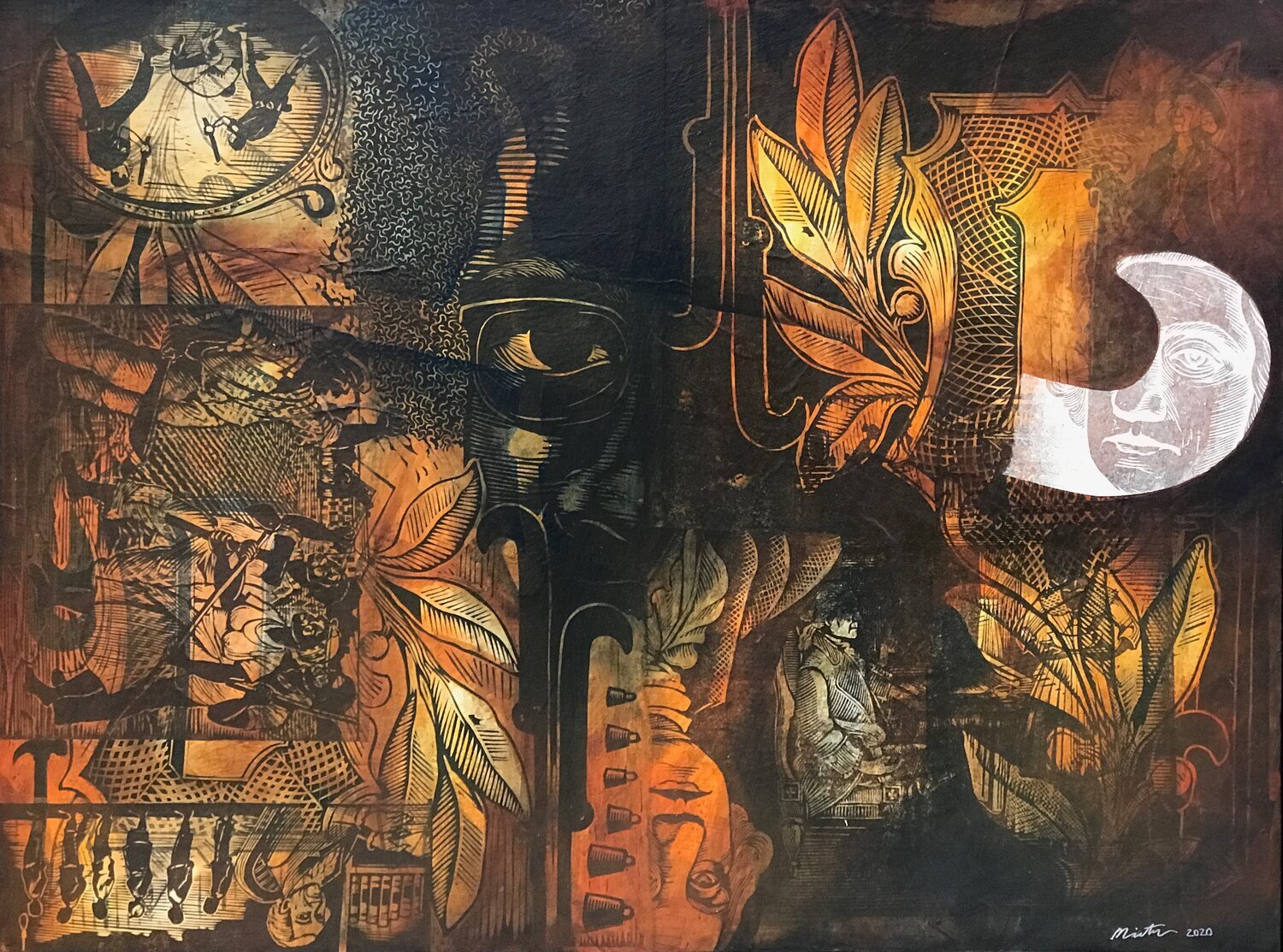I Am An American

Daniel Minter, Deep Inside US
November 12, 2020 - January 16, 2021
About The Show
We hold these truths to be self-evident, that all men are created equal, that they are endowed by their Creator with certain unalienable Rights, that among these are Life, Liberty, and the pursuit of Happiness. - The Declaration of Independence
What does it mean to be an American? For much of history in many places, such a question was trivial. One was French, because one was born in France, like one's parents, grandparents, great-grandparents, children-to-be, and so on. But that was never the case in the United States. As Alexis de Tocqueville noted, a unique American quality is mobility - social, economic, and geographic. Americans have never tied their identity or "American-ness" to a specific plot of soil or village as was common in Europe.
In 1850, when the question of who is an American was in particular peril, preacher and abolitionist Theodore Parker gave a sermon to the New England Anti-Slavery Convention in Boston in which he argued that The Declaration of Independence's concept of inalienable rights and equality is the "American Idea."
Later that decade, in shockingly twisted fashion, Supreme Court Chief Justice Taney agreed with that concept of the "American Idea" while denying descendants of imported African slaves - even if freed - American-ness. He reasoned that because they were not the people who wrote the Declaration of Independence declaring that "all men are created equal," they could never be equal.
Can a shared, revolutionary idea define American-ness? Has the concept been reduced to a particular plot of land? Or could the answer be an ever-evolving cultural one?
In this hyper-partisan time, conflicting visions of who is an American seem as present as ever. Providing no more than the title of the exhibition, we asked five artists - George Longfish, Leonard Meiselman, Natasha Mayers, Daniel Minter, and Robert Shetterly - to participate and provide their own unique answer: I Am An American.
Featured Artists
Daniel Minter, known for his work in the mediums of painting and assemblage, often deals with themes of displacement and diaspora, ordinary/extraordinary blackness; spirituality in the Afro-Atlantic world; and the (re)creation of meanings of home.
Artist, educator, writer, and curator George Longfish (Seneca/Tuscarora) has been instrumental in shaping the field of contemporary Native American art for over forty years.
Born and raised in New York City, Leonard Meiselman received his art education at the Cooper Union, the Skowhegan School of Art in Maine and the Cranbrook Academy in Michigan. After Living in Florence, Italy for over 18 years, he returned to the United States and is now a full-time Maine resident.
Natasha Mayers has been called “the most committed activist artist in Maine.” Her work often explores themes of peace and social justice
For nearly 20 years, Robert Shetterly has been painting portraits of Americans Who Tell the Truth. The portraits have given Shetterly an opportunity to speak throughout the country about the necessity of dissent in a democracy, the obligations of citizenship, sustainability, US history, and how democracy cannot function if politicians don’t tell the truth, if the media don’t report it, and if the people don’t demand it.





























